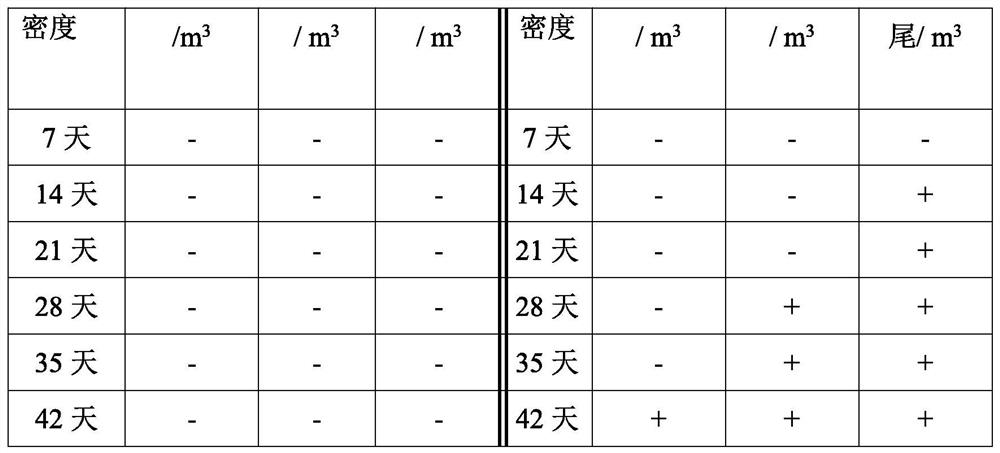Penaeus vannamei breeding method based on detection of enterocytozoon hepatopenaei infection dose
A technology of shrimp hepatic Enterocystis and breeding method, which is applied in the field of Penaeus vannamei cultivation based on the detection of shrimp hepatic Enterococcus infection, can solve the problems of small use area, missed detection, and reduced operation, so as to reduce economic loss and cost Effect
- Summary
- Abstract
- Description
- Claims
- Application Information
AI Technical Summary
Problems solved by technology
Method used
Image
Examples
Embodiment 1
[0042] 1. Pond disinfection before breeding
[0043] 15-20 days before the breeding period, drain or add pond water level to 10-20cm, soak with 150-200kg quicklime (or 40-50kg bleaching powder and other disinfectants) per mu, during the soaking process, plow the bottom of the pond for 5-10cm , The pond stems are splashed with disinfectant water 2-3 times to ensure that the breeding ponds are thoroughly disinfected, and the disinfectant water is discharged after soaking for 3 days. If it is clear that there was Enterococcus hepatica infection in the previous batch of breeding, soak and disinfect again according to the previous method, and reduce the residual disinfectant solution by changing the water, etc., so as to meet the fishery water quality standards (GB 11607-89) such as pH and residual chlorine. The sediment at the bottom of the pool is tested for Enterocystoma hepatica according to the aquatic industry standard (SC / T7232-2020) to ensure that the breeding environment i...
Embodiment 2
[0066] A breeding experiment was carried out on a greenhouse farm of Penaeus vannamei in Yancheng, Jiangsu Province. There are 96 greenhouses in the base.
[0067] In 2019, according to the conventional breeding method, I chose to buy a certain brand of shrimp seedlings. Before purchasing the seedlings, no routine pathogen detection was carried out. The seedling size was about 1cm, and the stocking density was 80,000 fish / shed. The food intake and growth were obviously found after 40 days of breeding. The speed is slow. It was found that all the ponds of this batch of shrimp were infected with Enterococcus hepatica, and the quantitative data showed that the copies of Enterococcus hepatica in all pond shrimp samples exceeded 10000copies / ngDNA. The farmer continued to breed for 60 days. The size of the shrimp was 4-7cm, and the growth rate of the shrimp was about 30% slower than that of the same period last year. The copy volume of the shrimp was more than 50,000 copies / ngDNA. Du...
PUM
 Login to View More
Login to View More Abstract
Description
Claims
Application Information
 Login to View More
Login to View More - R&D
- Intellectual Property
- Life Sciences
- Materials
- Tech Scout
- Unparalleled Data Quality
- Higher Quality Content
- 60% Fewer Hallucinations
Browse by: Latest US Patents, China's latest patents, Technical Efficacy Thesaurus, Application Domain, Technology Topic, Popular Technical Reports.
© 2025 PatSnap. All rights reserved.Legal|Privacy policy|Modern Slavery Act Transparency Statement|Sitemap|About US| Contact US: help@patsnap.com



